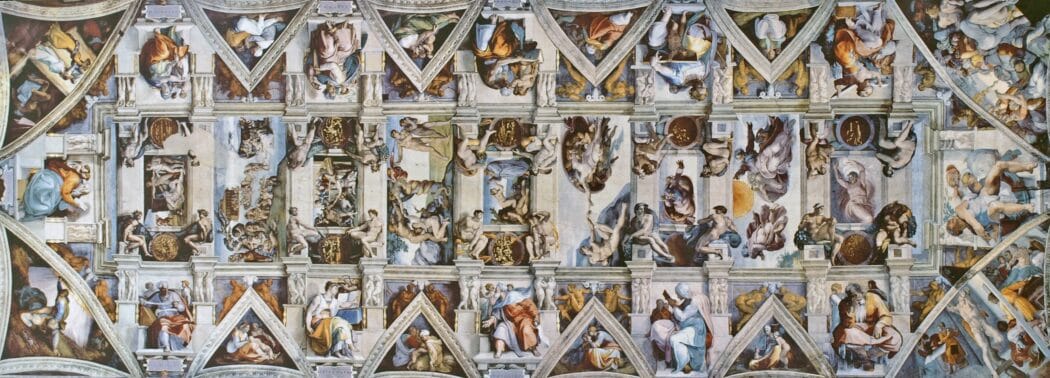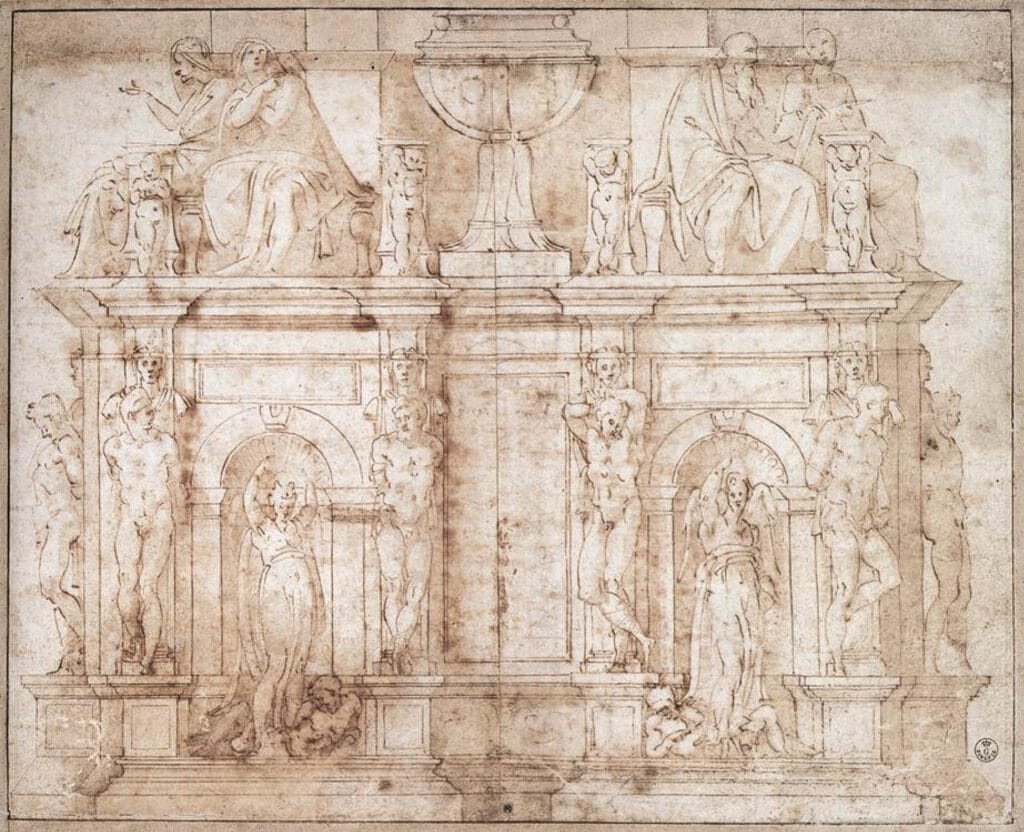
In the year 1505, Michelangelo, the greatest sculptor of the Renaissance is preparing to begin the greatest work of his lifetime. The tomb of Pope Julius. Michelangelo designed a masterpiece, his magnum opus, a massive carving of marble that would be 23 feet wide, 34 feet deep and 50 feet high. It would have over 40 lifelike statues of Moses, Paul, Peter, Old Testament Prophets, angels, humans and even the pope himself. Michelangelo spent 8 months sourcing the finest marble, creating designs and preparing.
Then, nothing happened for more than two years. Michelangelo waited, and waited and waited.

What Michelangelo didn’t know was that all during the time he was preparing for his masterpiece, Donato Bramante, the artistic director of the Vatican had been working against him. Bramante considered Michelangelo’s greatness a threat to his place as artistic director. He told Pope Julius that it was bad luck to have his tomb built during his own lifetime. In addition, he said that they had a greater work that needed money, time and even Michelangelo’s skills. The Sistine Chapel.
The Sistine Chapel had begun construction in 1483, and was about to be completed in 1508. At this point, Michelangelo had been waiting for three years to hear from the pope on the tomb he was planning.
Pope Julius finally approached Michelangelo and told him that the construction of the tomb would be cancelled indefinitely. But he had a greater role for Michelangelo. He wanted him to paint the 5,000 square foot Sistine Chapel ceiling on Donato Bramante’s suggestion.
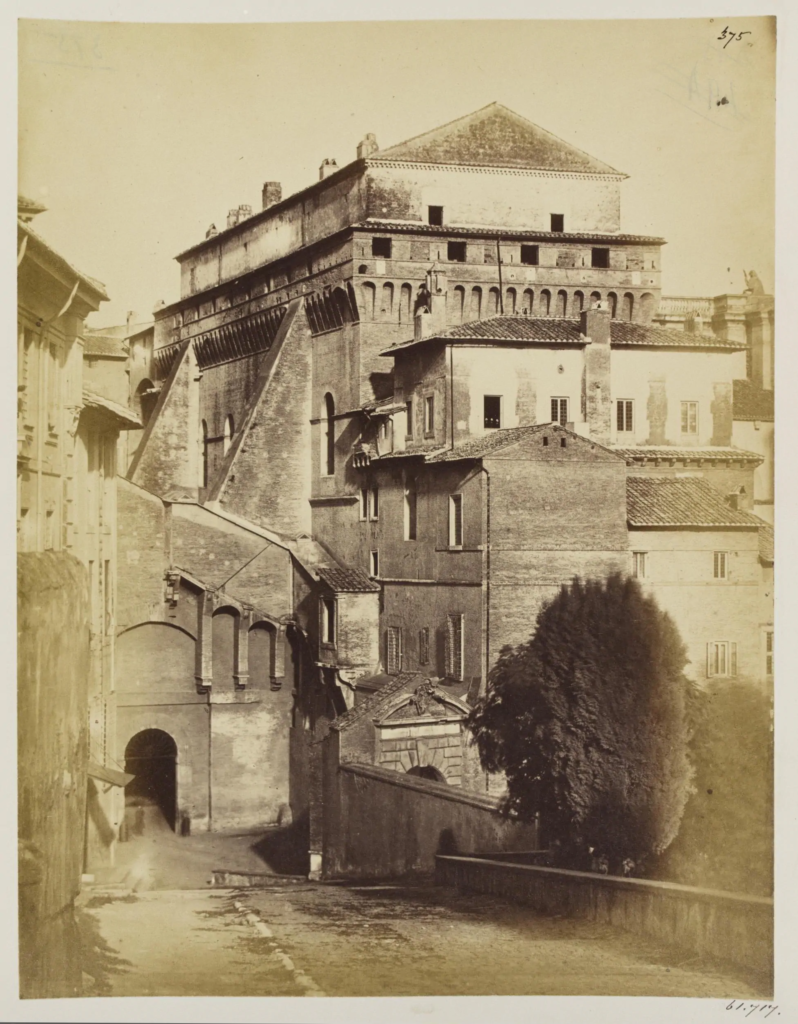
Donato Bramante and Michelangelo’s rivals knew this would be an impossible task. They thought that there was no way Michelangelo would be able to complete the massive project, and would be humiliated and leave Rome.
Michelangelo was furious. Not only had his rivals worked against him. But he wasn’t a painter, he was a sculptor! He had very little painting experience. He had not painted since he was a teenager, and besides, he considered painting a lesser art form to sculpting solid marble. His failure at this task seemed to be inevitable.
He immediately went to the pope to decline, he suggested another artist, and up and coming painter named Raphael. He was a sculptor, not a painter, why would they ask him to paint?
Michelangelo was already considered the greatest sculptor of his time. He was preparing his greatest work, and now the plan had changed. Pope Julius was notoriously persistent and confrontational. When you are in Rome in 1508, and the pope tells you to paint, you paint.
But when the Pope says “paint,” you paint. The Pope confronted Michelangelo, threatened him, and finally cancelled all Michelangelo’s other projects until it was the only project Michelangelo could do. At the start of the job, Michelangelo wrote this: “Today, 10 May 1508, I, Michelangelo sculptor, have received from His Holiness… payment on account of the painting of the chapel vault…” .
With a deep breath, the 33-year-old sculptor-turned-painter climbed the scaffolding and gazed at the vast empty expanse above. What he saw made his heart pound: over 5,000 square feet of blank vaulting.
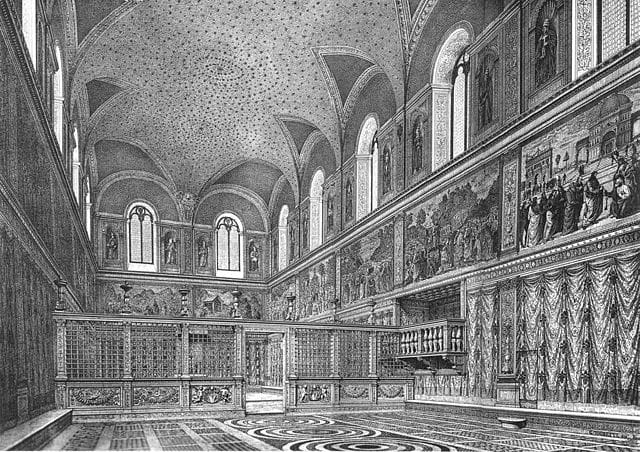
Once Michelangelo began painting, his sculptor’s instincts became his superpower. He approached the ceiling as if it were a block of marble to be carved with color and brush. His understanding of form, depth, and anatomy—honed by years of carving stone and studying the human body—allowed him to create figures that seem three-dimensional, their muscles and poses incredibly lifelike. One observer remarked that the painted figures “pulse with life, but it is life poured into a sculpture: stone enlivened.”
Michelangelo hadn’t decided to become a painter, he decided to sculpt the ceiling using paint.
He populated the ceiling with over 300 figures in dynamic poses : from Adam, whose athletic form reclines as God gives him life, to grand prophets and angels whose powerful bodies twist and turn as if on a rounded stage. Every figure shows Michelangelo’s mastery of human anatomy. He had dissected corpses in secret to learn how muscles and bones work, all to ensure his art mimicked God’s most perfect creation, the human body . This knowledge shines on the ceiling. The prophets and saints have weight and volume; you can almost feel the strength in their limbs and the drapery of their robes. Michelangelo’s sculptor’s eye enabled him to paint depth and weight, making the plaster vault teem with a reality and presence no one had seen before. His “sculpting with paint” approach revolutionized fresco painting and led to the breathtaking vitality that still awes viewers today.
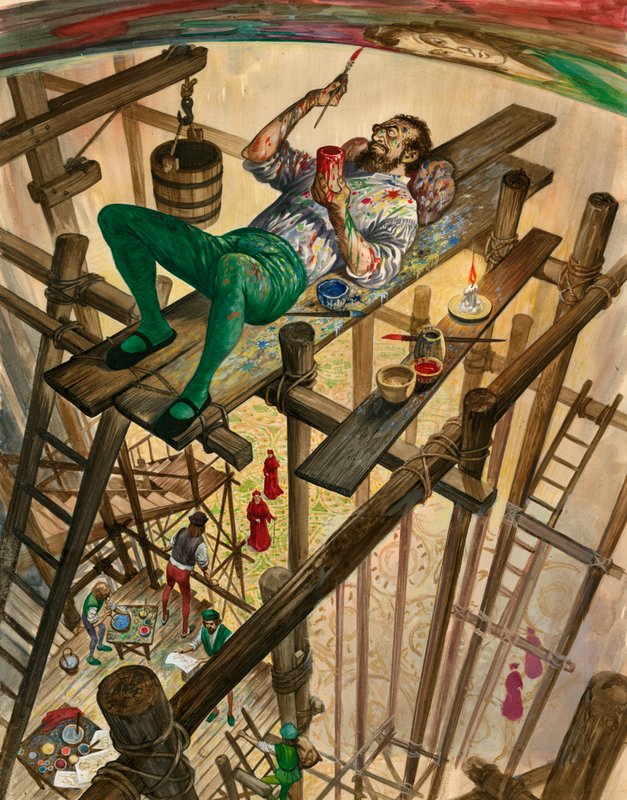
Michelangelo had to paint on a curved surface nearly 60 feet in the air, and make sure the sprawling composition on a curved ceiling looked perfectly proportioned from the floor below . Imagine being up on the scaffolding: all you see are figures contorted across a ceiling that bends over your head. Up close, everything is distorted. Michelangelo often painted figures larger or skewed in shape, knowing that from the chapel floor far below they would appear in normal perspective.
This was extraordinarily difficult. Michelangelo was learning as he went—experimenting with fresco techniques and mathematical perspective at the same time. He even invented a new kind of scaffold that hung from the ceiling, so he could lie on his back or crouch while painting overhead without an obstructive tower rising from the floor. As he worked on this daunting task, he would write to a friend: “My painting is dead… I am not in the right place—I am not a painter.”
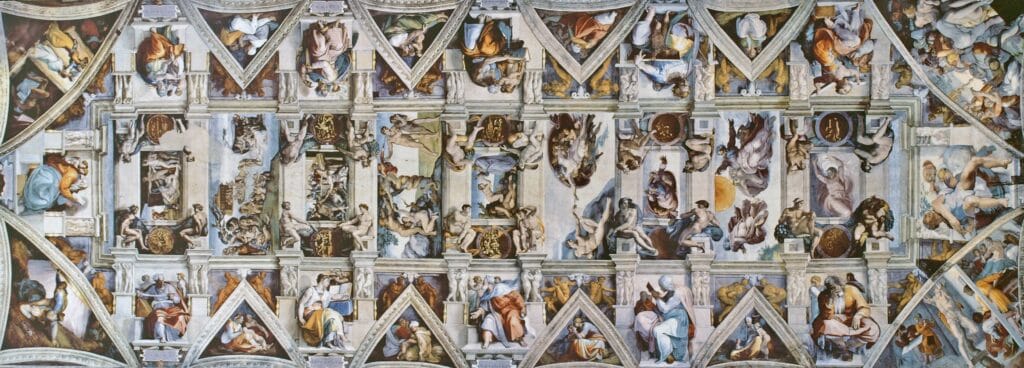
Despite his feelings, he pushed through and inch by inch, section by section, he kept at it for four years. Finally, in October 1512, the entire ceiling was complete. Michelangelo had painted from Creation to Noah across 5,000 square feet of plaster, transforming the chapel into a vivid theatre of sacred history. The ceiling was immediately hailed as a triumph. One early observer likened Michelangelo to a divine artist, saying the frescoes were worthy of the “greatest praise in the history of art.” In fact, these paintings are now regarded as the single greatest work of painting in the entire history of Western civilization by many art historians .
The task he sought to reject, agonized over, and wanted to give up on became his crowning achievement. Had he stayed within the confines of how he saw himself (only a sculptor), what would the Sistine Chapel look like today? Would we even care?
Pope Julius would die a year later in 1513, and Michelangelo would work on his tomb for 40 years. He would only complete 6 of his planned 40 statues, but his statue of Moses would still be considered by many to be his greatest sculpture.
Is your life a work of art?
Ephesians 2:10 says that “For we are God’s masterpiece. He has created us anew in Christ Jesus, so we can do the good things he planned for us long ago.” When the Bible uses the word “masterpiece” it is the Greek word ποίημα (poíēma). This is where we get the word “poem.” It means a unique creation unlike anything else, a work of art and divine inspiration.
This verse tells us two things:
- God created you 1:1, you are meant to be a singular work of art.
- God planned for you to do great things “long ago.”
God knew the masterpiece that your life would be. He chose you to be born right now, as you are, where you are. Why? Because the great things he planned you for can only happen at this moment. But, like Michelangelo painting a ceiling at an angle up close, we can have trouble seeing our own lives that way. If this was true, why don’t more of us feel like we are doing great things? Why do we feel so limited in life? There’s three questions I’ve asked myself that may help you too.
How do you see you?

How do you see you? How does God see you? Are they the same? Do you agree with God about you, or are you trying to get God to agree with you about you? Raise your hand if everything in your life has gone according to your plan so far. Most of the time, in my own life, I have found that when things don’t go according to my plan, I am surprised, shocked, devastated and even depressed at the outcome. Why? Because it can feel like when things don’t go according to plan, that the masterpiece is becoming a piece of trash. This makes me think of Bob Ross.
When he would paint and make a mistake, he would say “we don’t make mistakes, just happy accidents.” Then, like magic he would absorb the mistake into the painting as if it was supposed to be there the whole time.
What would happen in your life if you really decided to see yourself the way God sees you? All the way. That determines how we answer the next question.
How do you see adversity?
“Don’t seek for everything to happen as you wish it would, but rather wish that everything happens as it actually will—then your life will flow well.” / Epictetus
Do you view adversity the way God views it? Psalm 34:19 says “many are the afflictions of the righteous, but the Lord delivers us from them all.” Romans 8:28 says “We know that God causes all things to work together for the good of those that love Him and are called according to His purpose.”
I love how James talks about adversity/trouble in the book of James.
“Dear brothers and sisters,* when troubles of any kind come your way, consider it an opportunity for great joy. For you know that when your faith is tested, your endurance has a chance to grow. So let it grow, for when your endurance is fully developed, you will be perfect and complete, needing nothing.
/ James 1:2-4
You have probably seen these verses before. Maybe you know them by heart. But do you believe them? Knowing something ≠ believing it.
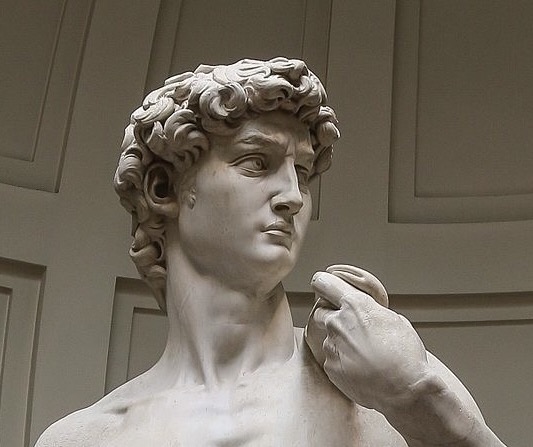
One of the things that made Michelangelo famous was his statue of David. It is 17 feet tall, and weighs over 10,000 pounds. Two previous artists had been commissioned to sculpt David, and both quit. The marble sat in the quarry for 25 years dormant until Michelangelo came along. When he was asked how he was able to finally complete the sculpture, he said: “It is simple, I just removed everything that wasn’t David.”
Isaiah 64 tells us that God is the potter and we are the clay, and we are formed by His hand. Hebrews 12:27 gives us this perspective: “This means that all of creation will be shaken and removed, so that only unshakable things will remain.” Combine these thoughts together.
- James 1 – God wants you to cultivate endurance.
- Isaiah 64 – God is shaping and forming you by His own hand.
- Hebrews 12 – After God’s shaking in your life, only the things that are unshakable will remain.
I imagine that if marble had feelings, it wouldn’t like to be carved. Carrara marble is from a mountainous region in Italy where the mountains look like they are covered in snow, but it’s not snow. It’s marble.
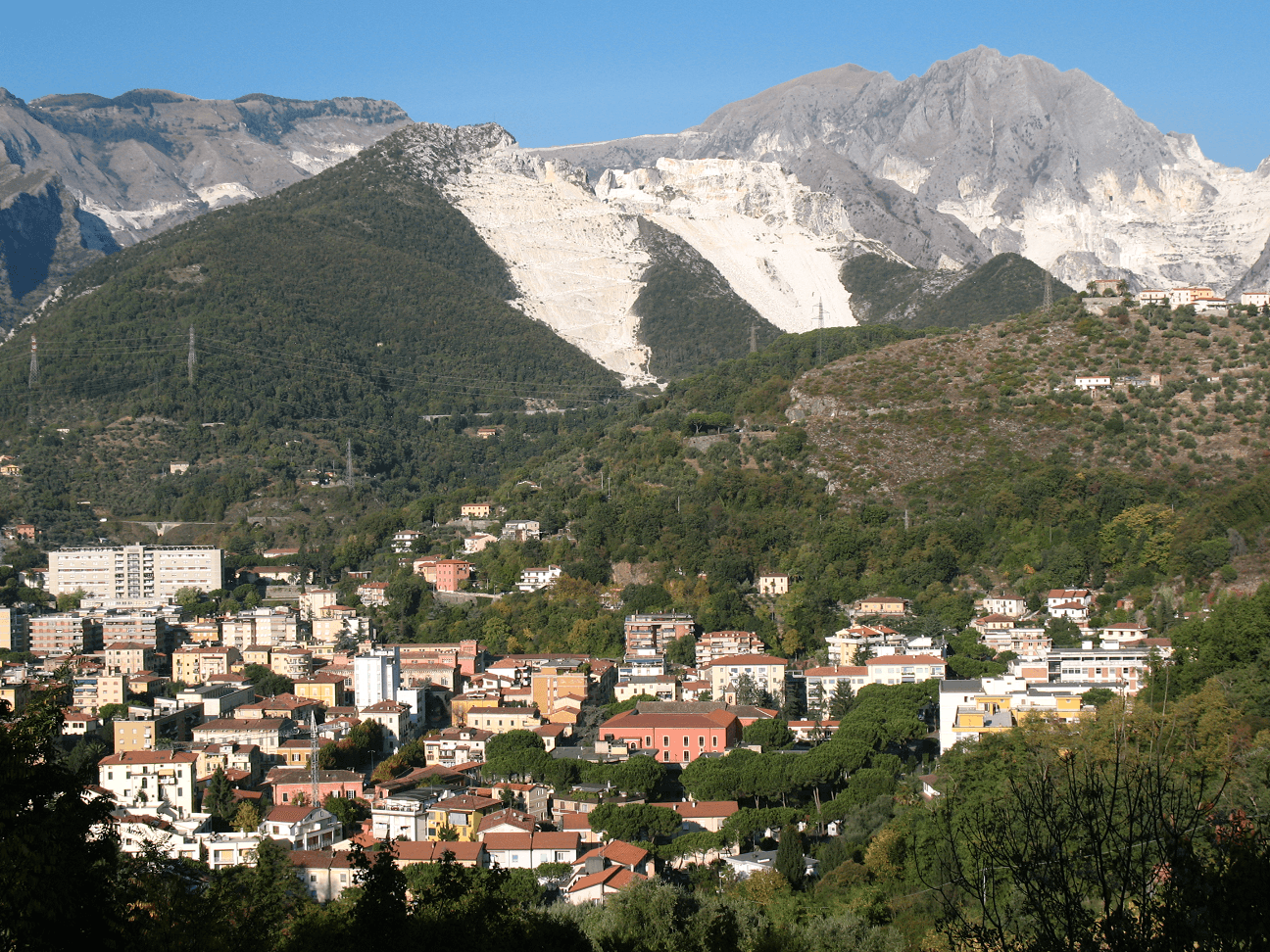
Marble is a rock. Not a sculpture. Michelangelo was a sculptor. Not a painter. You are you today. God sees who you are supposed to be at your highest potential. The way you see adversity has a lot to do with how you see yourself. Maybe God is trying to remove everything that isn’t “David” in your life. So why be upset when troubles, struggles and adversity comes? The problem with adversity is never the adversity itself, but how we decide to see adversity.
Dr. Andrew Huberman talks about this. In studies on stress, the most important thing about stress is how we see stress, not the stress itself. If we see stress as a good thing, it can actually enhance our performance. If we see stress as a bad thing, it decreases our performance and leads to typical stress responses like burnout.
Do you see adversity as growing you or destroying you? The problem with adversity is not adversity. It is how we see it. We don’t think we can endure it. Why don’t we think we can endure it? I think because we don’t see ourselves as a masterpiece. We only see ourselves as we are right now. But how does God see you? He sees you at your highest potential.
What happens when we experience adversity, challenges and stretching? Like Michelangelo, the sculptor turned painter, as we experience adversity, challenge and stretching, we discover parts of us that we did not know existed.
There is no way for this to happen without challenges.
But the problem for most of us with the challenges that we face, is that we don’t feel that we are up to them. We feel utterly limited by our challenges. But here’s a secret of limitations: every limitation you have is one you want. Why do I say that? Well, where do your limitations come from? There’s really only a couple places:
- Limitations people have placed on you – that you have agreed with.
- Limitations you have placed on yourself.
Notice the common denominator? You. I once heard Les Brown say this: “If you argue for your limitations, you get to keep them.”
A lot of us spend a lot of time arguing for our limitations to ourselves and others. We see adversity as a ceiling that we can’t break through. And instead of pushing past limitations and becoming a masterpiece, we interpret adversity as a sign we should stop.

I love the story of Grandma Moses. She lived a simple life and made quilted objects for friends and family. By the age of 76, she had developed arthritis and could no longer embroider. Her sister suggested that painting would be easier for her, and she started painting at the age of 78. She wasn’t a painter, she was a mother, housekeeper, sewer and grandmother.
She eventually became one of the greatest painters in American history. She painted until her death at 101, and her most expensive painting sold for over $1 million.
The problem that we often have is not adversity. It is the artificial limitations we have agreed with, or placed on ourselves. God knew that Michelangelo was more than a sculptor. He knew that Grandma Moses was more than a knitter. The problem is not how God sees you, its how you see you, and how you see the adversity you are experiencing.
What if, everything in your life is about God further transforming you into the masterpiece he created you to be? How does that change your relationship to adversity? This leads us to the final question.
If God has a plan for your life, who can stop it from happening?
“Yet God has made everything beautiful for its own time. He has planted eternity in the human heart, but even so, people cannot see the whole scope of God’s work from beginning to end. So I concluded there is nothing better than to be happy and enjoy ourselves as long as we can.”
/ Ecclesiasties 3:11-12
Some people read this verse and think it is some kind of melancholy take on the futility of life. That couldn’t be further from the truth. God has made everything beautiful for its time – including you. But, like Michelangelo painting the Sistine Chapel up close, we can’t see it from beginning to end. Our life doesn’t appear like a masterpiece today. Everything looks distorted until we zoom out and get greater perspective.
We’ve all heard it. Hindsight is 20/20. You won’t understand the journey until after it is complete. Until you step down from the scaffolding and look at the masterpiece you have been partnering with God on creating. Only at the end of the journey of your life will you see God’s fingerprints all over your life making you into a masterpiece.
Ecclesiasties says it. We don’t see the whole picture. We have this dream, this eternal idea in our heart, but our human lives are finite. Nothing can stop God’s plan from happening in our lives except one thing. Our lack of ability to enjoy the process we are in right now. All there is for you to do, is to enjoy the journey of making your life into a masterpiece. No matter how weird, distorted, or even painful today may be.
All anxiety is future focused, all shame is past focused. You can neither live in the future or the past. No matter how much you ruminate on it.
The future is God’s responsibility. Now is your responsibility. Learn from your past, enjoy today and prepare for a great future.
God doesn’t entrust you with the future. He entrusts you with only three things right now. Your thoughts, your attitudes and your actions. Just do the next right thing, and it won’t just work out, your life will be a work of art.
“Do what you can, with what you have, where you are” // Theodore Roosevelt
And let God take care of the rest.

